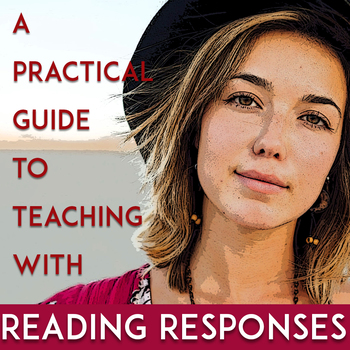Reading Response Handouts for High School | Reading Logs | Reading Journals
- PDF
- Google Apps™
- Internet Activities

What educators are saying
Also included in
- Ready to integrate more Native voices into your curriculum this year? While trickster tales, creation myths, and other traditional stories definitely have their place in an American literature curriculum, it’s important that your students don’t get the message that Indigenous literature is only somPrice $12.97Original Price $23.76Save $10.79
- Want to empower your students to take charge of their own educations? So many short story resources involve nothing more than checking boxes or filling out pages of meaningless worksheets. This kind of busywork might seem convenient, but it doesn’t teach students any skills that they need. In fact,Price $41.97Original Price $83.37Save $41.40
Description
Do you want you students to learn how to read, analyze, and write about literature independently?
Do your students have a tough time when they are faced with a blank page or have to write without being told what to write about?
This guide to reading response journals based on quote analysis and close reading will get your students reading, analyzing, and writing about literature on their own. I have been teaching with reading responses for eleven years, and this guide includes what you need to teach your students to think independently without having to read and grade every single thing they write.
The Reading Response Guide includes:
--an introduction to using reading responses in your classroom
--two differentiated step-by-step printable handouts for students
--a simple but complete rubric for grading responses
--suggestions for grading student work without burning out
--student samples with analysis
--suggestions for teaching online as well as links to ready-to-go Google documents and forms for an easy transition to distance learning
--printable student samples for your students to grade and discuss
--everything that you need to implement reading responses in your classes tomorrow
In many ways, reading responses are the most important things that my students write. They are places for them to explore a text, whether it is one that we are reading together or one that they are working on independently, and they are great ways for students to practice close reading and thinking for themselves. Since my main goal with these responses is to empower students to find their own ideas in a text, I never give them prompts or topics to discuss. Instead, I give them concrete steps to follow that push them to work through a challenging poem, story, essay, or novel (and then I encourage them to drop those steps as soon as they feel ready).
When you see the progress that your students make in their writing and critical thinking skills, and when you see them gain the confidence to tackle challenging passages on their own, you’ll love reading responses as much as I do.







